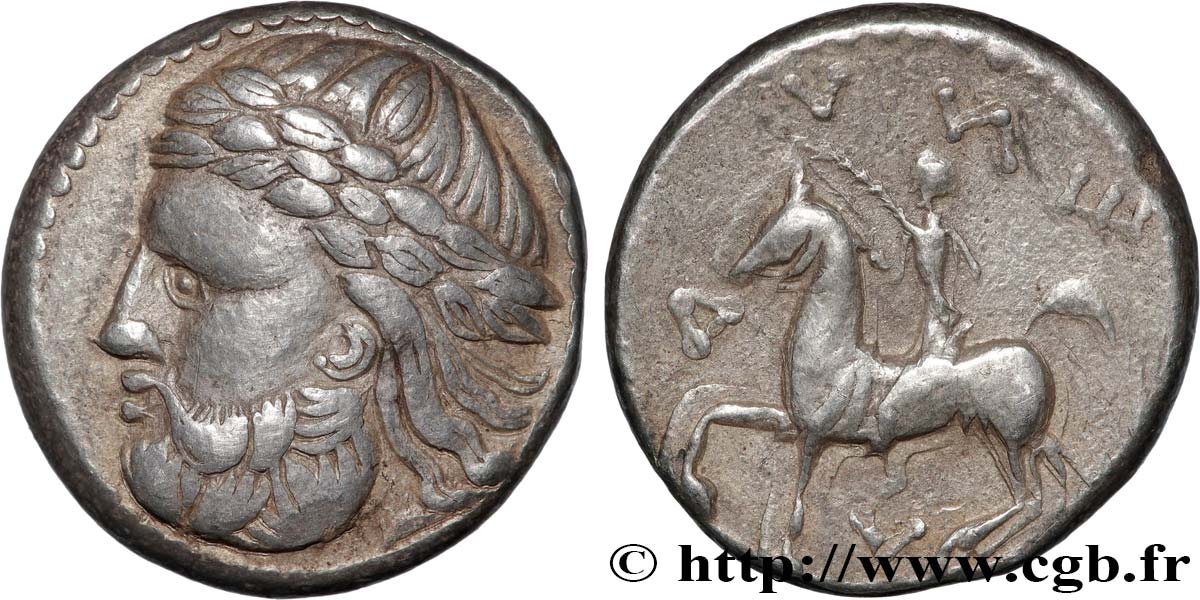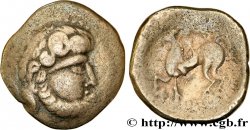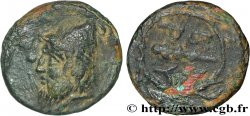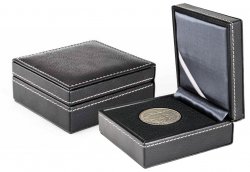Live auction - bga_835994 - DANUBIAN CELTS - IMITATIONS OF THE TETRADRACHMS OF PHILIP II AND HIS SUCCESSORS Tétradrachme “au rameau”
You must signin and be an approved bidder to bid, LOGIN TO BID. Accounts are subject to approval and the approval process takes place within 48 hours. Do not wait until the day a sale closes to register. Clicking on "BID" constitutes acceptance of the terms of use of cgb.fr private live auctions.
Bids must be placed in whole Euro amounts only. The sale will start closing at the time stated on the item description; any bids received at the site after the closing time will not be executed. Transmission times may vary and bids could be rejected if you wait until the last second. For further information check the Live auction FAQ
All winning bids are subject to a 18% buyer’s fee.
All winning bids are subject to a 18% buyer’s fee.
| Estimate : | 900 € |
| Price : | 600 € |
| Maximum bid : | 600 € |
| End of the sale : | 05 September 2023 15:39:55 |
| bidders : | 1 bidder |
Type : Tétradrachme “au rameau”
Date: (IIe-Ier siècles avant J.-C.)
Metal : silver
Diameter : 23,5 mm
Orientation dies : 3 h.
Weight : 14,19 g.
Rarity : R2
Coments on the condition:
Belle monnaie sur un flan épais et centré. Très beau portrait de Zeus au droit, finement détaillé. Revers tréflé. Patine grise
Catalogue references :
Predigree :
Cet exemplaire provient de la collection Norbert Michaud, fameux collectionneur d’art japonais
Obverse
Obverse legend : ANÉPIGRAPHE.
Obverse description : Tête laurée de Zeus à gauche, grènetis.
Reverse
Reverse description : Cavalier au pas à gauche, tenant une palme de la main droite ; le cheval lève l'antérieur à droite ; légende dégénérée autour du cheval.
Reverse legend : FILIP - POU
Commentary
Cet exemplaire est celui de MONNAIES 28, n° 688. Ce tétradrachme semble être des mêmes coins que le n° 688 de MONNAIES 28 et du n° 3 de la vente LANZ 154. Mis à part ces exemplaires, ce type précis semble manquer à tous les ouvrages et catalogues de musées consultés.
Si le statère d’or de Philippe II de Macédoine a servi de prototype à de nombreuses imitations gauloises, le tétradrachme n’a pas été imité en Gaule, mais reste principal sujet d’inspiration des monnaies pour les Celtes du Danube (LT. 9697-9767, 9768-9832, 9618-9630, 9870-9886). Les premières imitations furent frappées dans le premier quart du IIIe siècle avant J.-C. La fabrication des copies serviles, puis des imitations, enfin des frappes celtiques continuèrent pendant plus de deux siècles.
This example is that of MONNAIES 28, n° 688. This tetradrachm seems to be from the same dies as n° 688 of MONNAIES 28 and n° 3 of the LANZ 154 sale. Apart from these examples, this precise type seems to be missing from all works and museum catalogs consulted. If the gold stater of Philip II of Macedonia served as a prototype for numerous Gallic imitations, the tetradrachm was not imitated in Gaul, but remained the main subject of inspiration for the coins of the Celts of the Danube (LT. 9697 -9767, 9768-9832, 9618-9630, 9870-9886). The first imitations were struck in the first quarter of the 3rd century BC. The manufacture of servile examples, then imitations, and finally Celtic mintings continued for more than two centuries.
Si le statère d’or de Philippe II de Macédoine a servi de prototype à de nombreuses imitations gauloises, le tétradrachme n’a pas été imité en Gaule, mais reste principal sujet d’inspiration des monnaies pour les Celtes du Danube (LT. 9697-9767, 9768-9832, 9618-9630, 9870-9886). Les premières imitations furent frappées dans le premier quart du IIIe siècle avant J.-C. La fabrication des copies serviles, puis des imitations, enfin des frappes celtiques continuèrent pendant plus de deux siècles.
This example is that of MONNAIES 28, n° 688. This tetradrachm seems to be from the same dies as n° 688 of MONNAIES 28 and n° 3 of the LANZ 154 sale. Apart from these examples, this precise type seems to be missing from all works and museum catalogs consulted. If the gold stater of Philip II of Macedonia served as a prototype for numerous Gallic imitations, the tetradrachm was not imitated in Gaul, but remained the main subject of inspiration for the coins of the Celts of the Danube (LT. 9697 -9767, 9768-9832, 9618-9630, 9870-9886). The first imitations were struck in the first quarter of the 3rd century BC. The manufacture of servile examples, then imitations, and finally Celtic mintings continued for more than two centuries.








 Report a mistake
Report a mistake Print the page
Print the page Share my selection
Share my selection Ask a question
Ask a question Consign / sell
Consign / sell
 Full data
Full data















